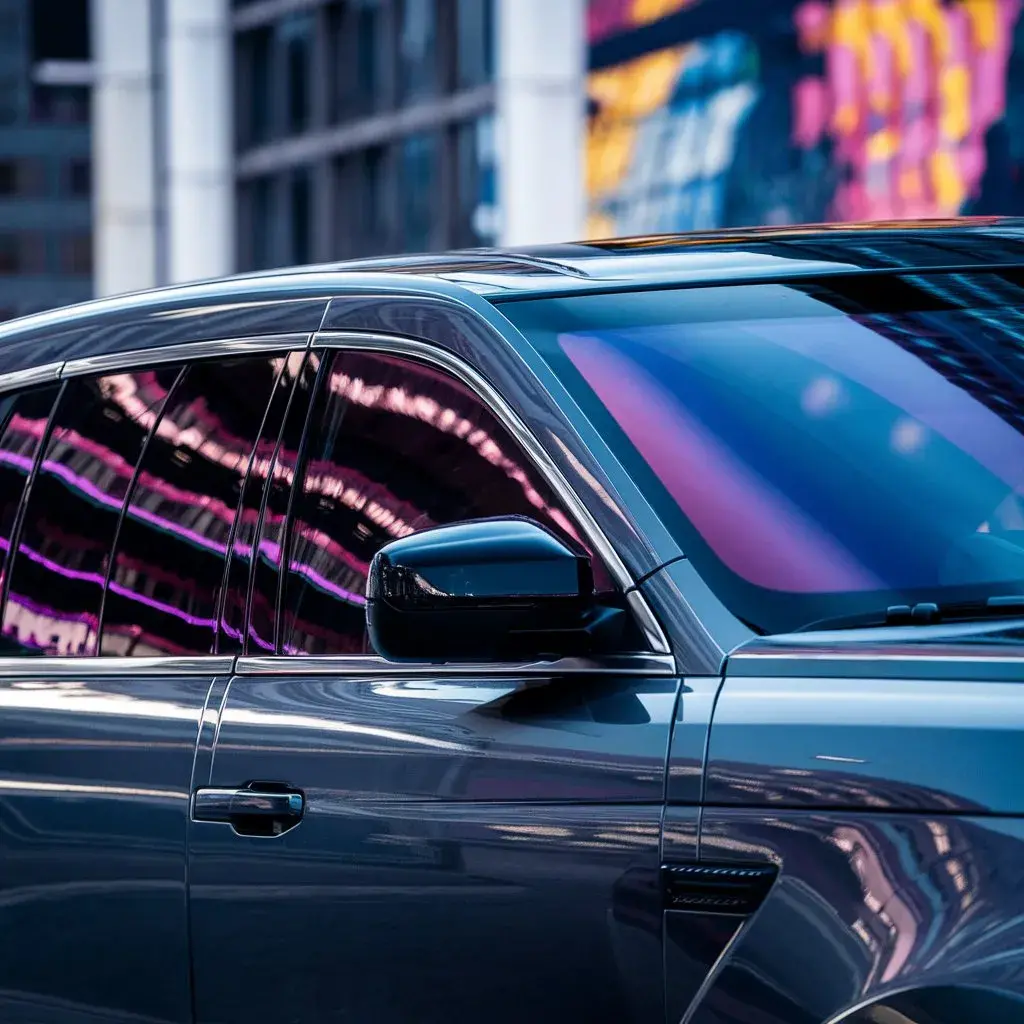
In the realm of window tinting, the decision to opt for metalized film involves a careful assessment of both its functional benefits and potential drawbacks. Auto glass tinting with metalized window tints, which incorporate tiny metallic particles to reflect heat and block ultraviolet rays, is particularly suited for environments where temperature control and UV protection are paramount. This makes them an excellent choice for vehicles, commercial buildings, and residential spaces in climatically challenging regions. However, the reflective nature of the metal used can interfere with radio and GPS signals, a critical consideration in today’s digitally connected world. As we explore further, it becomes imperative to balance these factors to determine the suitability of metalized tints in various settings.
Ideal Applications for Auto Glass Tinting with Metalized Tint
Metalized window tints are particularly advantageous in applications where superior heat rejection and enhanced privacy are paramount. For instance, in high-rise office buildings, where external thermal influences significantly affect interior comfort and energy efficiency, metalized tints serve as a crucial barrier. These tints, embedded with microscopic metal particles, reflect solar radiation, thereby reducing the load on HVAC systems and creating a more stable internal environment. This not only enhances the comfort of the occupants but also contributes to substantial energy savings over time.
Similarly, automotive uses of metalized tinting cannot be overlooked. Vehicles exposed to prolonged sunlight can benefit immensely from metalized films, as they mitigate the penetration of UV rays and infrared radiation, protecting interiors from heat damage and fading while ensuring privacy for passengers. The reflective properties of these tints make them ideal for those seeking privacy and security in their personal or company vehicles.
Furthermore, in residential settings, especially in regions with high temperatures and intense sunlight, metalized tints provide homeowners with a cost-effective solution to enhance privacy and reduce cooling costs. By selecting metalized window tints, community members not only safeguard their property but also contribute to the collective effort in energy conservation.
Key Benefits and Limitations
Having outlined the primary applications for metalized window tints, it is now pertinent to explore their key benefits and inherent limitations.
Metalized tints are well-regarded for their performance and durability, but like any specialized product, they also present certain challenges. Understanding these can help you determine whether they align with your specific needs.
Key Benefits:
- Enhanced UV Protection: Metalized tints block up to 99% of UV rays, protecting occupants from harmful exposure and reducing interior fading.
- Superior Heat Rejection: Their reflective properties deflect sunlight effectively, keeping interiors cooler and reducing reliance on air conditioning.
- Increased Privacy and Security: The metallic layer offers a mirrored effect, enhancing privacy and deterring potential break-ins.
- Durability: These tints are less prone to fading over time compared to dyed films.
- Glare Reduction: They help in cutting down the glare from sunlight, enhancing visual comfort for drivers and passengers.
Limitations:
- Potential for Signal Interference: The metal in the film can interfere with cell phone, GPS, and radio signals.
- Aesthetic Considerations: The shiny appearance might not appeal to everyone and can sometimes be at odds with vehicle or building aesthetics.
- Cost: Generally, metalized tints are more expensive than their non-metalized counterparts.
In conclusion, metalized window tint stands as a paragon of utility and efficiency in scenarios demanding superior heat rejection, UV protection, and enhanced privacy. Despite its higher cost and potential for signal interference, its application in high-rise buildings, auto glass tinting, and residential spaces in sun-drenched locales offers a compelling case.
Stakeholders must weigh these advantages against the limitations to make informed decisions that align with specific environmental and functional requirements, ensuring optimal performance and satisfaction.